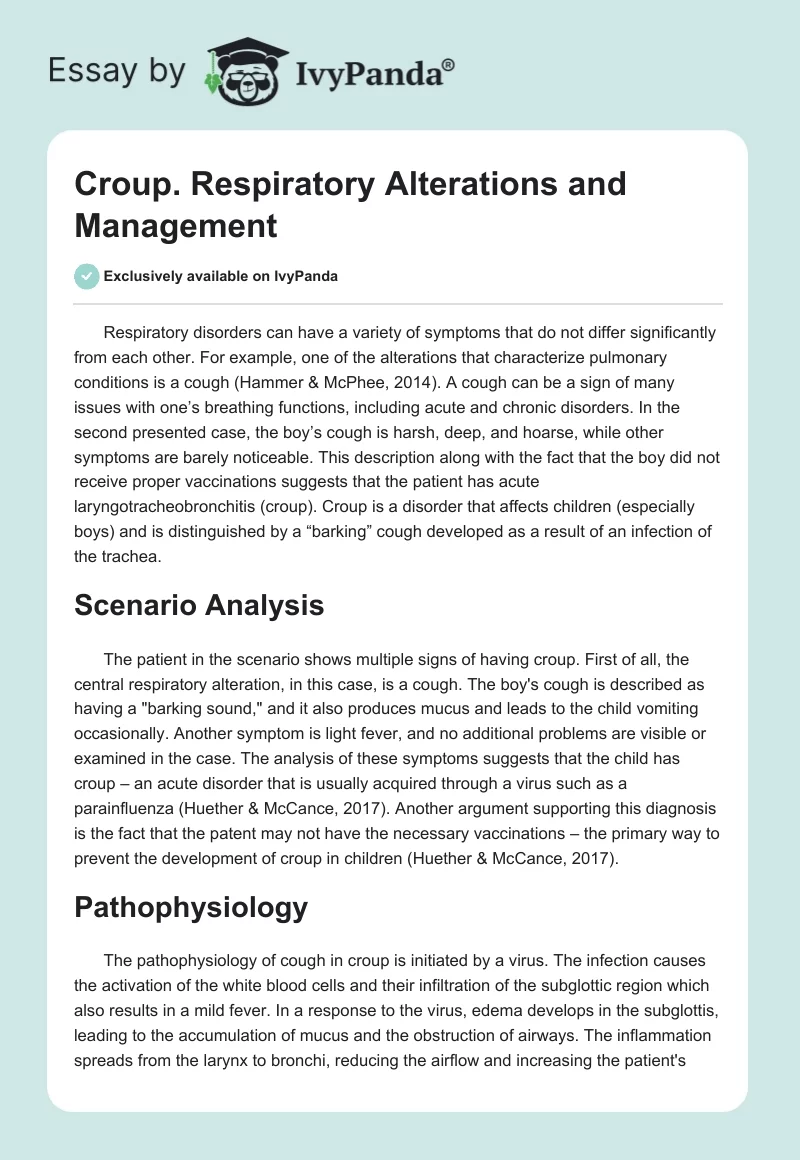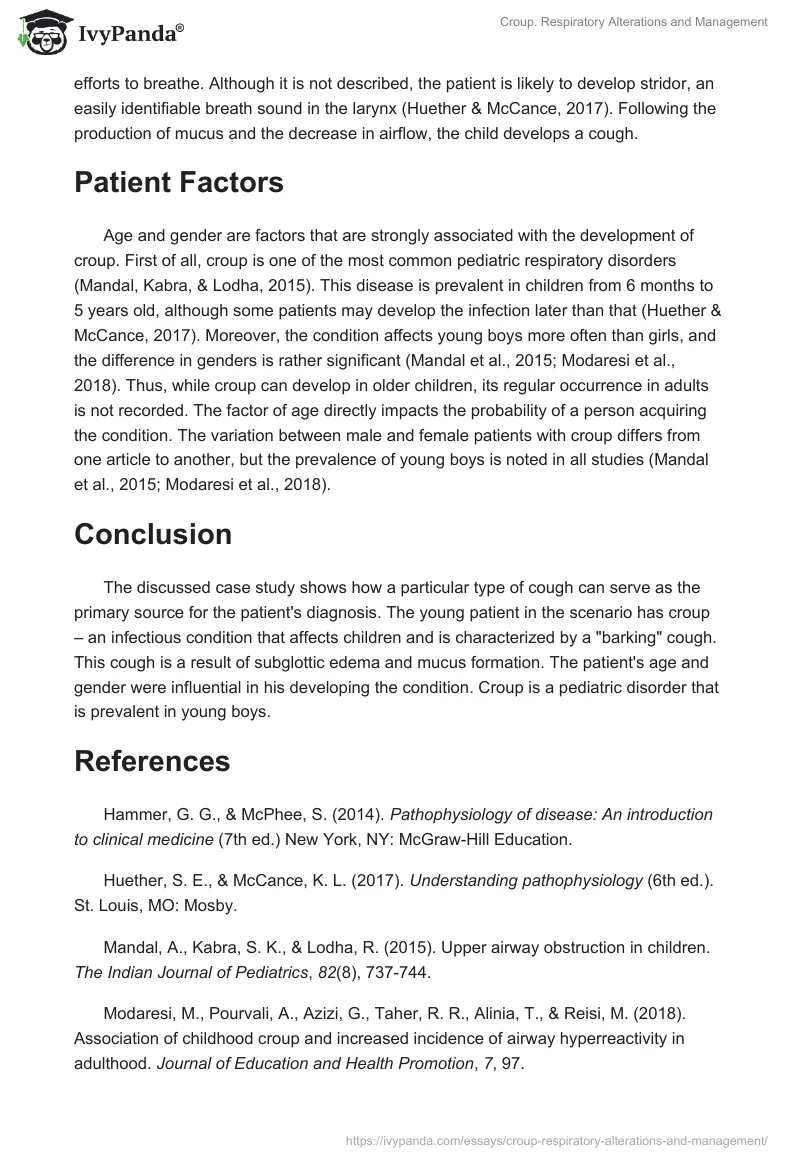Respiratory disorders can have a variety of symptoms that do not differ significantly from each other. For example, one of the alterations that characterize pulmonary conditions is a cough (Hammer & McPhee, 2014). A cough can be a sign of many issues with one’s breathing functions, including acute and chronic disorders. In the second presented case, the boy’s cough is harsh, deep, and hoarse, while other symptoms are barely noticeable. This description along with the fact that the boy did not receive proper vaccinations suggests that the patient has acute laryngotracheobronchitis (croup). Croup is a disorder that affects children (especially boys) and is distinguished by a “barking” cough developed as a result of an infection of the trachea.
Scenario Analysis
The patient in the scenario shows multiple signs of having croup. First of all, the central respiratory alteration, in this case, is a cough. The boy’s cough is described as having a “barking sound,” and it also produces mucus and leads to the child vomiting occasionally. Another symptom is light fever, and no additional problems are visible or examined in the case. The analysis of these symptoms suggests that the child has croup – an acute disorder that is usually acquired through a virus such as a parainfluenza (Huether & McCance, 2017). Another argument supporting this diagnosis is the fact that the patent may not have the necessary vaccinations – the primary way to prevent the development of croup in children (Huether & McCance, 2017).
Pathophysiology
The pathophysiology of cough in croup is initiated by a virus. The infection causes the activation of the white blood cells and their infiltration of the subglottic region which also results in a mild fever. In a response to the virus, edema develops in the subglottis, leading to the accumulation of mucus and the obstruction of airways. The inflammation spreads from the larynx to bronchi, reducing the airflow and increasing the patient’s efforts to breathe. Although it is not described, the patient is likely to develop stridor, an easily identifiable breath sound in the larynx (Huether & McCance, 2017). Following the production of mucus and the decrease in airflow, the child develops a cough.
Patient Factors
Age and gender are factors that are strongly associated with the development of croup. First of all, croup is one of the most common pediatric respiratory disorders (Mandal, Kabra, & Lodha, 2015). This disease is prevalent in children from 6 months to 5 years old, although some patients may develop the infection later than that (Huether & McCance, 2017). Moreover, the condition affects young boys more often than girls, and the difference in genders is rather significant (Mandal et al., 2015; Modaresi et al., 2018). Thus, while croup can develop in older children, its regular occurrence in adults is not recorded. The factor of age directly impacts the probability of a person acquiring the condition. The variation between male and female patients with croup differs from one article to another, but the prevalence of young boys is noted in all studies (Mandal et al., 2015; Modaresi et al., 2018).
Conclusion
The discussed case study shows how a particular type of cough can serve as the primary source for the patient’s diagnosis. The young patient in the scenario has croup – an infectious condition that affects children and is characterized by a “barking” cough. This cough is a result of subglottic edema and mucus formation. The patient’s age and gender were influential in his developing the condition. Croup is a pediatric disorder that is prevalent in young boys.
References
Hammer, G. G., & McPhee, S. (2014). Pathophysiology of disease: An introduction to clinical medicine (7th ed.) New York, NY: McGraw-Hill Education.
Huether, S. E., & McCance, K. L. (2017). Understanding pathophysiology (6th ed.). St. Louis, MO: Mosby.
Mandal, A., Kabra, S. K., & Lodha, R. (2015). Upper airway obstruction in children. The Indian Journal of Pediatrics, 82(8), 737-744.
Modaresi, M., Pourvali, A., Azizi, G., Taher, R. R., Alinia, T., & Reisi, M. (2018). Association of childhood croup and increased incidence of airway hyperreactivity in adulthood. Journal of Education and Health Promotion, 7, 97.


